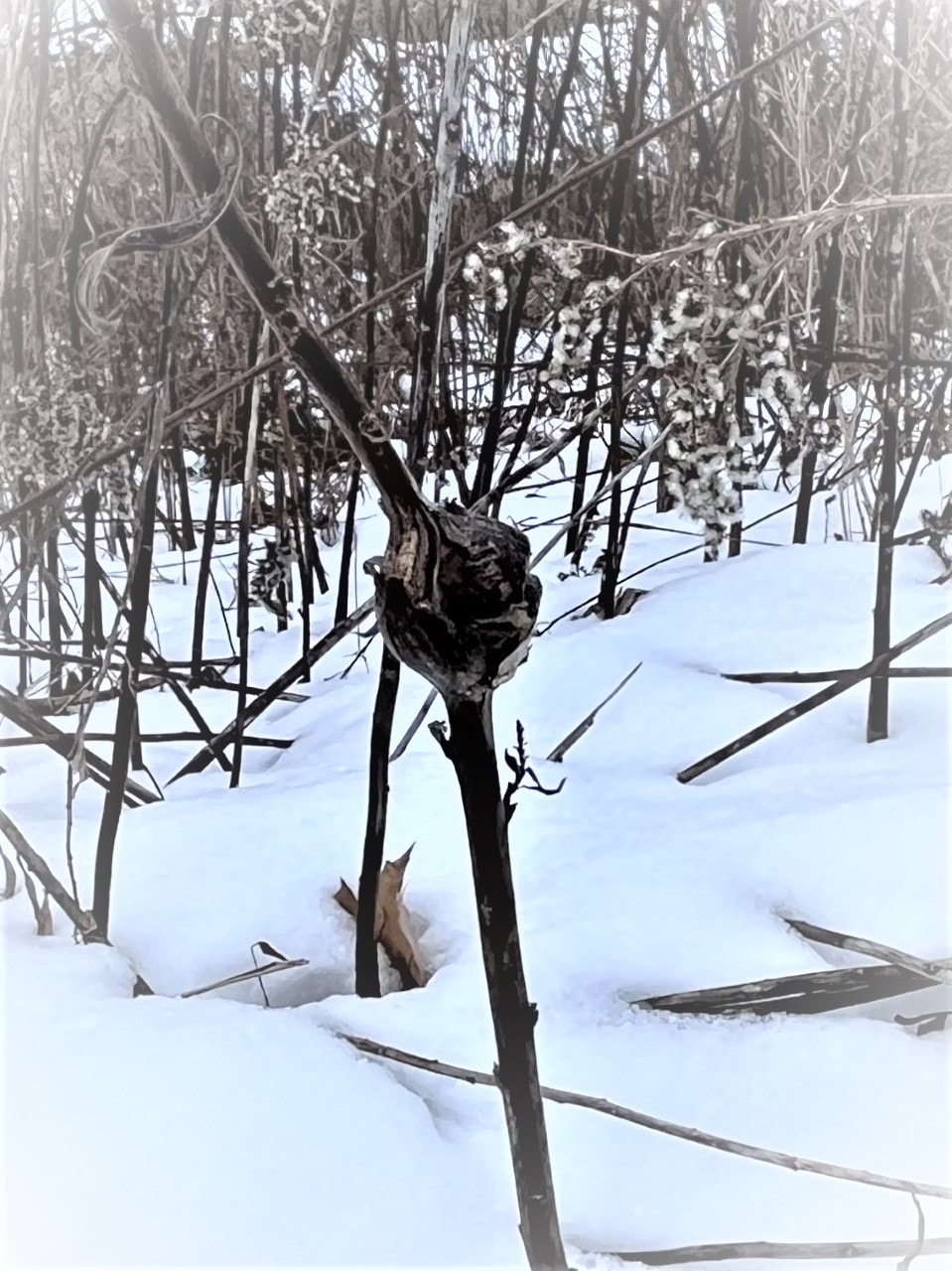The winter landscape offers a chance to focus on interesting sights that are often hidden by the blooms of spring and summer. The brown, spent stems of goldenrod (Solidago spp.) may not seem to have much to offer at first glance–but a closer look reveals a fascinating life story!
The swollen area on this goldenrod stem is called a gall, and signals the presence of an invader– the goldenrod gall fly (Eurosta solidagnis), which has pierced the stem to lay its eggs. The eggs hatch in about a week and a half, and the larvae burrow deeper into the plant’s stem, feeding on the nutritious tissues within. In response to the larval insect’s feeding, the plant increases cell production at the site of injury, forming a gall that becomes apparent about 3 weeks after the eggs are laid. Initially the gall is the same size and color as the stem, but eventually grows to nearly the size of a golf ball.
By wintertime, the larvae are still there, but have now entered diapause, producing special chemicals (glycerol and sorbitol) to keep them from freezing. The gall itself helps to protect the larvae from predators such as birds throughout the winter. (If you spot a chickadee pecking away at a gall, you’ll know they’re wise to this strategy!.) Later in spring, the inconspicuous adult fly emerges from the gall. But even this process isn’t as simple as it might sound. Since they have no mouthparts, the adults can’t chew their way out of the gall; instead, they inflate a balloon-like structure between their eyes to push open the thin covering. Once outside they inflate their wings, and fly away to spend the rest of their lives (a whopping 10-14 days) mating and laying eggs to produce the next generation.
These harmless little flies are an important part of the food web, supporting not only birds but a type of beetle and several species of parasitoid wasps as well.
During your next winter walk, take a closer look–and imagine the drama unfolding, hidden in plain sight!
Photo: Lisa Schneider


 RSS Feed
RSS Feed